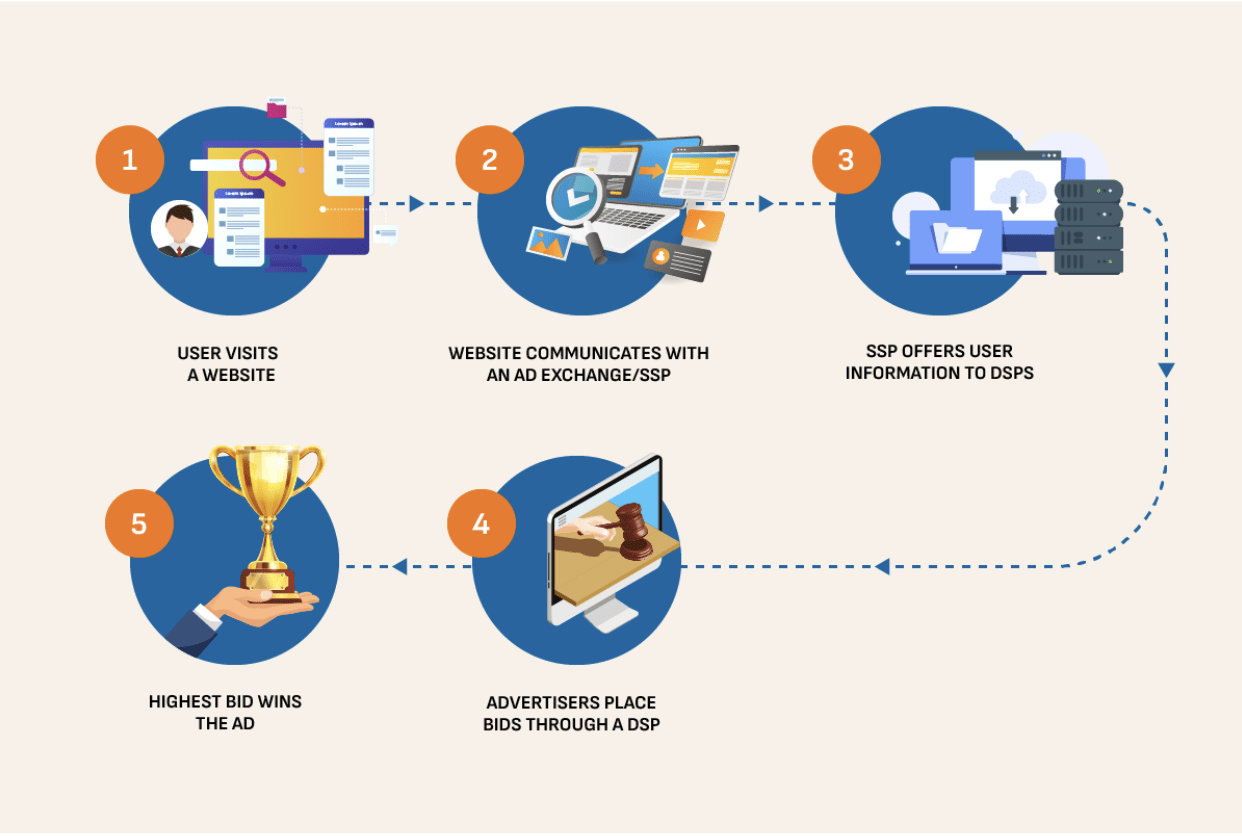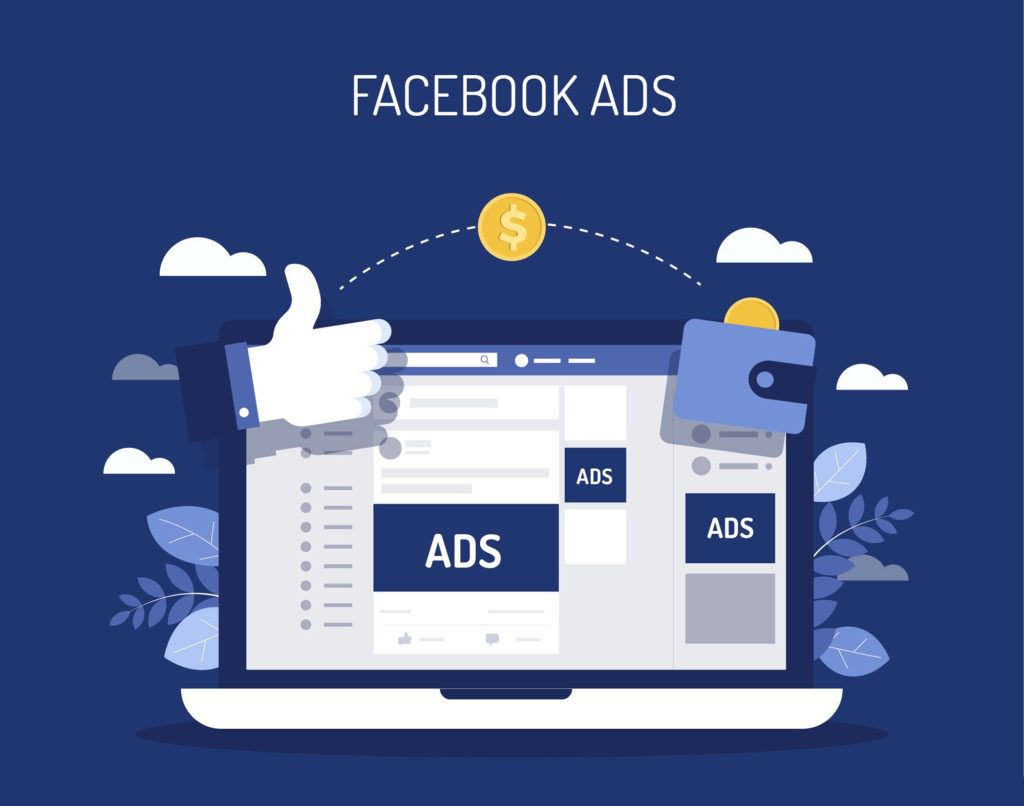Advertisers are constantly searching for new and effective ways to reach their desired audiences. Prior to the introduction of programmatic advertising, the process of ordering, configuring, and reporting on ads was entirely manual. Programmatic advertising, a game-changer, has transformed the manner in which businesses establish connections with their target audience.
What Is Programmatic Advertising?
Unlike the traditional manual approach, programmatic advertising uses algorithms and technology to make the buying process more efficient and targeted. It automates the method of buying and optimizing digital advertising in real time by using AI and machine learning.
As mentioned in the introduction section, digital ads were purchased and sold through manual processes that resulted in a costly and unreliable procedure. However, the cost-effective nature of programmatic advertising has made it accessible even to new and small marketers, thereby helping them achieve their objectives.
How Does Programmatic Advertising Work?
We’ve outlined key points and provided detailed explanations to help you understand how programmatic advertising works.

#1. Data-Driven Targeting
Ever wonder how advertisers make sure their ads reach the right people? Data-driven targeting helps them direct ads to individuals who are more likely to be interested in their products or services. Advertisers collect various types of data from online users, including their browsing history, search queries, social media interactions, and demographic information. This data forms the foundation for understanding user behavior and preferences.
Once the data is collected, advertisers analyze them so that they can create specific segments or groups of users based on common characteristics. Advertisers can customize these segments to be as specific as required. This will result in more precise and personalized targeting.
By using segmented data, advertisers can identify the most relevant and valuable audiences for their products or services. When ad spaces become available in real-time, the programmatic system assesses which audience segments match the criteria set by the advertiser.
Data-driven targeting allows advertisers to move beyond broad demographics and connect with consumers on a more personalized level. This increases the probability of user engagement and conversion which in turn maximizes the effectiveness of advertising campaigns.
#2. Real-Time Bidding (RTB)
This point was briefly touched upon in the preceding section. We’ll provide a detailed explanation in this section.
Upon a user’s navigation to a website or app featuring vacant ad slots, it sparks the commencement of real-time bidding. The ad space at hand is promptly placed into real-time auction. Advertisers who are interested in reaching the particular audience visiting that webpage participate in this auction.
Advertisers submit bids indicating the maximum amount they are willing to pay for the ad space. These bids are evaluated in real time. The auction is won by the advertiser offering the highest bid, granting them the privilege of having their advertisement showcased in the vacant spot on the web page or application. Subsequently, the victorious advertisement promptly appears to the user who initiated the auction by accessing the website or application. This entire sequence unfolds within a fraction of a second.
Real-time bidding is driven by algorithms and technology. This lets advertisers bid for ad impressions based on certain criteria (target audience demographics, behavior, or other relevant factors). This enables them to reach their target audience when they are actively engaged in online content.
#3. Demand-Side Platforms (DSPs)
Demand-side platforms (DSPs) are tools used by advertisers to manage and optimize their digital advertising campaigns efficiently. They use these platforms to set campaign parameters, such as target audience demographics, ad formats, budget constraints, and bid strategies. DSPs are linked to ad exchanges and take part in real-time auctions for ad impressions. During these auctions, DSPs assess the available ad inventory and place bids on behalf of advertisers according to the predetermined campaign parameters.
DSPs integrate various data sources to enhance the targeting capabilities of ad campaigns. They use information about users, such as demographics, browsing habits, and contextual details so that they can make the right decisions during real-time bidding. They allow advertisers to reach their target audience across various digital platforms and devices, including display ads, mobile ads, video ads, and more.
DSPs continuously analyze campaign performance in real time. They look at user information like age, what they search for, and what they’re doing online to help them pick the best ads to show in real-time. This helps advertisers reach the right people on different digital platforms like websites, phones, and videos.
Advertisers gain access to a wide range of ad inventory available on ad exchanges through DSPs. This broad reach ensures that advertisers can find suitable placements for their ads to reach the desired audience. We can say that demand-side platforms are more or less like a central hub for advertisers that allows them to manage, improve, and execute programmatic advertising campaigns.
#4. Supply-Side Platforms(SSPs)
Are you wondering, “what’s the difference between SSPs and DSPs?” Well, we are here to answer the question for you. While both of them are integral to programmatic advertising, they serve different purposes. SSPs are used by publishers to sell ad space and optimize revenue. DSPs, on the other hand, are used by advertisers to buy ad impressions and manage campaigns.
In simple terms, SSPs focus on helping publishers sell their ad space, while DSPs assist advertisers in buying ad impressions. Together, they form a dynamic and efficient programmatic advertising system.
Now, let’s try to understand in detail how SSPs work:
- Supply-side platforms assist publishers in managing and optimizing the sale of their available ad space or inventory. They aim to maximize the revenue generated from a publisher’s ad inventory by connecting with multiple ad exchanges and making the inventory available for auction.
- SSPs actively participate in real-time auctions when a user visits a web page or app that has available ad space. During these auctions, SSPs make the publisher’s ad inventory available to potential advertisers. Advertisers bid in real-time for the right to display their ads in the available spaces.
- SSPs dynamically adjust pricing based on real-time demand and the perceived value of the ad space. This ensures that publishers secure the best possible deals.
- SSPs connect with multiple ad exchanges and expand the reach of a publisher’s ad inventory across various platforms and to a diverse range of potential advertisers. By integrating with ad exchanges, SSPs increase the chances of finding the highest bidder for a publisher’s ad space which in turn helps to maximize revenue.
- Supply-side platforms provide publishers with reporting and analytics tools to track the performance (data on impressions, click-through rates, and revenue generated) of their ad inventory.
Wrapping Up
Programmatic advertising has changed the way digital advertising works. It provides a more effective and precise method of reaching audiences. As technology improves, programmatic advertising will become even more crucial for digital marketing.
Now that you have understood how programmatic advertising works and have also realized its significance, you should consider embracing this innovative approach. Doing so will help your business stay ahead and establish more meaningful connections with your audiences.
Author Bio

Andy Beohar is the Managing Partner at SevenAtoms, a leading B2B demand generation agency. SevenAtoms is dedicated to driving growth for SaaS and B2B businesses through innovative and optimized paid search and is recognized by Google as a Google Premier Ads partner. At SevenAtoms, Andy plays a strategic role in managing paid search campaigns. Let’s connect on LinkedIn and Twitter!








